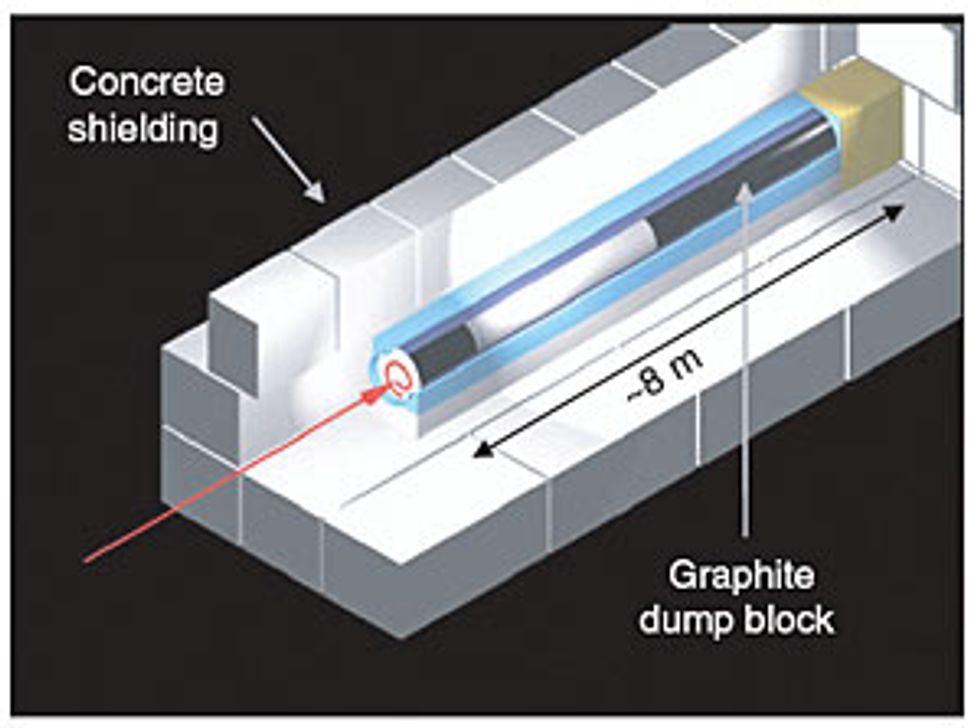13 August 2008—This week, the Large Hadron Collider (LHC)—the world’s most powerful particle accelerator—began test runs, sending a stream of protons around a quarter of its 27-kilometer circumference. The European Organization for Nuclear Research (known as CERN), in Geneva, Switzerland, where the LHC is housed, says the tests are part of the preparations for the machine’s projected 10 September start-up date.
The experiment will hurtle two hair-thin beams of hundreds of trillions of protons around a ring-shaped accelerator at 99.99 percent the speed of light, knocking the beams together 11 000 times each second. According to CERN LHC accelerator physicist Rüdiger Schmidt, who is in charge of machine protection systems, each unimpeded beam is capable of melting a 500-kilogram block of copper.
Even the slightest malfunction could lead to a catastrophic accident, so CERN has spent nearly two decades devising an interlocking system of fail-safes. One of these is a method of safely purging a proton beam, which has a higher chance of becoming unstable the longer it is whipped around the circular accelerator. Every 10 hours the accelerator gets fresh beams. But first the old ones are dumped into specially designed absorbers called beam dump blocks.
WHAT A DUMP
The 8 meter graphite dump block weighs about 10 tons. The shielding weighs about 1000 tons.
The two beam dump blocks are located at the ends of two straight tunnels tangentially diverging from what CERN scientists refer to as Point 6 on the circular accelerator. At 15 strategically located positions around the underground accelerator tunnel, so-called kicker magnets deflect the speeding beams out of their opposing circular paths and into these tunnels.
Having been kicked out of its circular racetrack, a newly freed beam is now steered via ”septum” magnets toward its beam dump. No longer constrained by the bending magnets inside the LHC tunnel, the beam travels in a straight line down the 700-meter tunnel.
Next, the 0.2-millimeter proton beam passes through 10 dilution magnets, which cause the protons to fan out until the beam has thickened to a lower-intensity diameter of 1.5 mm.
Now fattened to the width of a human hair, the beam continues down the tunnel to the beam-dump cavern. Inside waits a cylindrical block of a dense, absorptive graphite composite that is 8 meters long and 0.7 meters in diameter.
The 10-ton graphite cylinder is encased in 1000 metric tons of steel and concrete. Why not just make the whole thing out of lead or another heavy metal? It turns out that graphite is the only material whose low density and high melting point can resist the ravages of the proton beam. In experiments, researchers found that an 86-microsecond exposure of the beam would bore a hole 40 meters into a block of copper.
Even though the beam’s damage potential has now been reduced by its increased girth, the beam would still handily eat through the graphite composite cylinder. So instead of letting it burn a single 1.5-mm-wide hole into the cylinder, CERN engineers designed the system to ”scan” the beam onto the face of the cylinder, much as the electron beam is scanned in a cathode-ray-tube television screen. To ensure that the intense beam never lingers too long in one place, it is scanned as a pattern—which vaguely resembles the letter e —onto the cylinder.
Though the graphite beam dump becomes very hot (about 750 °C), it does not melt. In fact, after it cools down it can be reused a few hours later.
